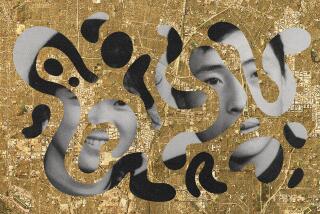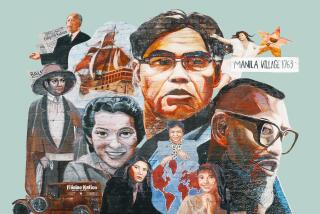End of Philippine Flights Decried
- Share via
Roy Morales flew from Los Angeles to Manila nearly every year on a 12-hour Philippine Airlines flight.
The attendants were friendly, the service good and “besides, what other airline serves rice and adobo?” said the retired social worker and teacher, referring to the popular Filipino pork and chicken dish, seasoned with garlic, vinegar and soy sauce.
For Morales and other Filipino Americans in Southern California, the era of direct flight convenience and in-flight kagandahang loob--Filipino hospitality--may be over.
Philippine Airlines, whose slogan was “Asia’s sunniest airline,” shut down at midnight Wednesday after Philippine Airlines Employees Assn. rejected a management offer to swap a 10-year suspension of collective bargaining rights for a 20% stake in the airline.
The negotiations, mediated by the Philippine government, failed to resolve differences between that country’s richest man--billionaire Lucio Tan--and its toughest labor union, which represents the airline’s 7,000 workers.
Early this morning, Philippine Airlines’ management and largest union reached a breakthrough agreement on a management-proposed rehabilitation plan, a labor leader told the Associated Press in Manila. The report said the agreement could lead to the airline’s reopening if it is approved by union members, regulators and the airline’s creditors.
In the meantime, the closure of Asia’s oldest airline had immediate repercussions in Southern California, home to the largest Filipino community in the United States.
As the news traveled, Filipino Americans expressed shock and dismay at the demise of the 57-year-old airline.
Since Thursday, phones have been ringing continually at many travel agencies. Anxious passengers with tickets are now scrambling to find connecting flights on other airlines.
“They are just going through every single airline,” said Reionn Webber of Mabuhay travel agency near downtown. He said his agency is calling customers to relay the news.
“It’s terrible for December departures because they’re so fully booked,” he said.
Many Filipino Americans return to visit relatives during the holidays. Their travel time will grow considerably: Other airlines make stops before landing in the Philippines.
There is more than convenience at stake.
“It’s a matter of national pride,” said one ticket holder. “It makes you feel good to see the Philippine flag on the plane. Now you feel like something is taken away from you.”
The ticket holder asked not to be identified because he was afraid that complaining might jeopardize his refund.
An overwhelming majority of Philippine expatriates in California maintain deep attachments to their former country, according to a 1996 Times poll. Three out of five visit the Philippines at least occasionally, and 66% send money home, according to the poll.
“The Filipino community in the United States is the biggest source of hard currency in the Philippines,” said Leo Pandac, program director of Pacific Asian Alcohol and Drug Program in Los Angeles.
He said the Filipino community in North America wires home about $4 billion in cash annually.
Philippine Airlines flights out of Los Angeles were always packed not only with passengers but with balick bayan, or “coming home boxes,” that Filipino Americans took with them.
The airline’s demise is far-reaching because the Philippines consists of some 7,100 islands, requiring connecting flights out of Manila.
Nina Gabriel, a reservation agent in Los Angeles who has been with the airlines for the past eight years, was crushed.
Agents will field calls until the end of the month. “After that,” Gabriel said, “I’ll have to look for another job.”
Joel Jacinto, head of a Filipino American community agency in Los Angeles who just returned from a visit to the Philippines, said that Filipino Americans will always find a way home.
“It’s unfortunate, and it has to inconvenience a lot of people, but we’re still going to go to the Philippines,” he said. “It’s an opportunity for other carriers to enter the market.”
Although most Filipinos in the United States arrived after 1965, their connection to California goes back to the ‘20s, when the first wave of immigrants, mostly young men, came by the thousands to find work.
Today, Filipinos are the fastest-growing ethnic group in the United States. The 1990 census counted 1.4 million Filipinos nationwide and 731,685 in California.
By 2000, Filipinos are expected to surpass 2 million, becoming the nation’s largest Asian group.
More to Read
Sign up for Essential California
The most important California stories and recommendations in your inbox every morning.
You may occasionally receive promotional content from the Los Angeles Times.













